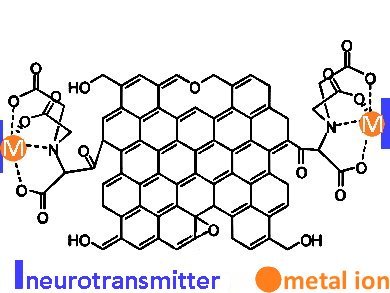Modification of nanomaterials to detect biomolecules is essential in sensor design. In traditional nanomaterial-based biosensors, recognition selectivity is achieved by the incorporation of antibodies; however, antibodies are expensive and sensitive to the reaction conditions. Graphene oxide (GO) is a known quencher of fluorescent organic dyes, so being able to modify GO to detect biomolecules will result in fluorescence-based optical sensors that do not require antibodies.
Jong-Ho Kim and colleagues, Hanyang University, Ansan, Republic of Kore, functionalized graphene oxide (GO) with trinitroacetic acid (TNA) to which metal ions could coordinate and change the photoluminescence of GO upon exposure to neurotransmitters. One example, Cu-NTA-GO, could selectively detect norepinephrine from living cells.
- Chemically-Modulated Photoluminescence of Graphene Oxide for Selective Detection of Neurotransmitter by “Turn-On” Response,
S.-J. Jeon, S.-Y. Kwak, D.-B. Yim, J.-M. Ju, J.-H. Kim,
J. Am. Chem. Soc. 2014.
DOI: 10.1021/ja504276z




